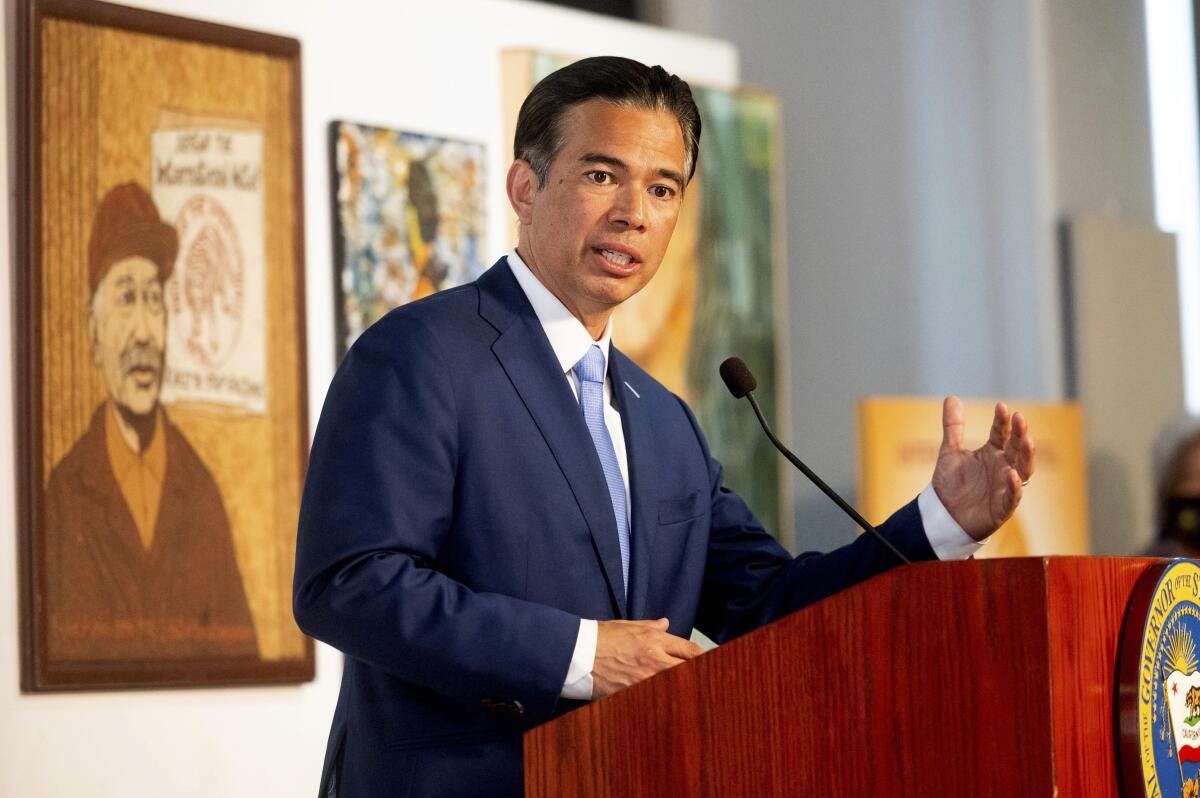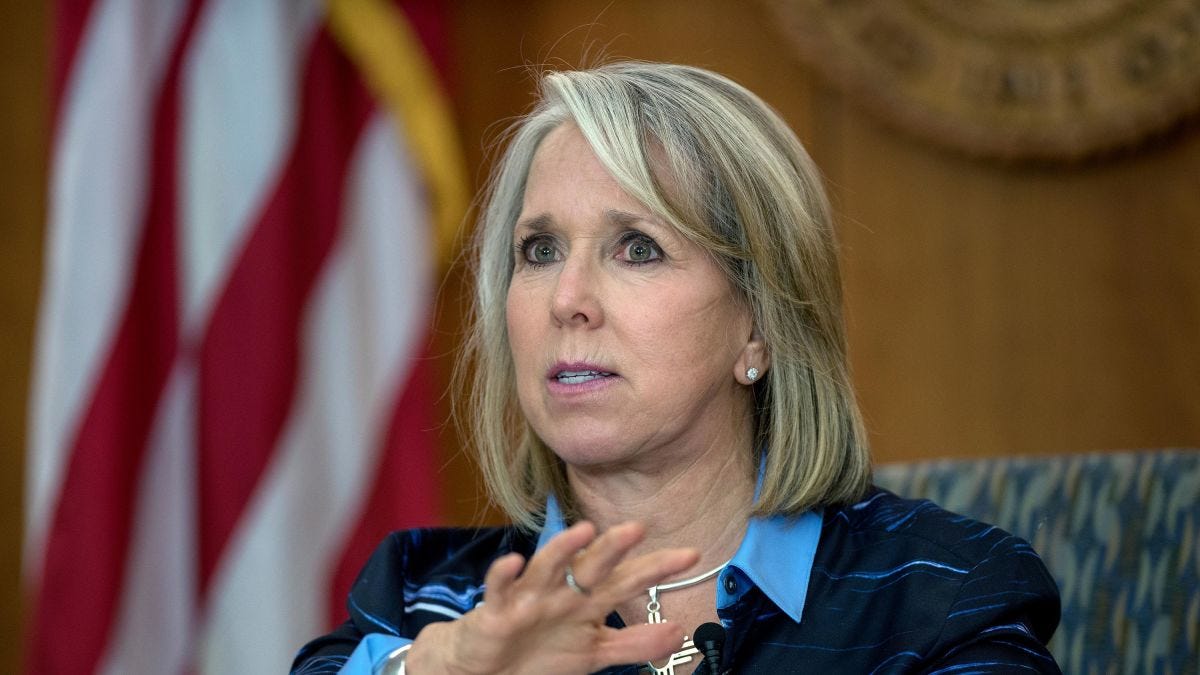Will Policies in Blue States Change?
Governors and AGs are preparing for a fight
What happened at the polls on Election Day wasn’t typical. Yes, Donald Trump made gains in urban, suburban, and rural areas, but there was also a notable uptick in split ticket voters.
They chose Trump but also voted for Democratic governors and attorneys general in swing states, like North Carolina. Other states that went red this election, like Pennsylvania and Kentucky, currently have Democratic governors. Now, these Democratic leaders need to decide how to govern once Trump takes office, especially since the first two years of his term (at least) will be bolstered by a Republican House and Senate.
These Dems are joined by lawmakers in deeply blue states, like New York and California, who have already vowed they’re “ready to fight” against many of Trump’s proposals. New York Governor Kathy Hochul said, “Governors filled the void of leadership during President-elect Trump’s first term, and Americans can be assured we’re prepared to fill it again.”
Here are a few more examples:
New Jersey Governor Phil Murphy pledged a “fight to the death” if the Trump administration pursues policies “contrary to our values.”
Illinois Governor JB Pritzker said he would uphold Illinois' values, stating, "When that means working with the next presidential administration that is what I will do, and when that means standing up to it, I believe my record is clear on where I'll be." He also said that anyone who comes “for my people, you come through me.”
California Governor Gavin Newsom called for a special meeting of the state legislature to “safeguard California values and fundamental rights in the face of an incoming Trump administration." The special session will focus on "bolstering California legal resources to protect civil rights, reproductive freedom, climate action, and immigrant families.”
New York Governor Kathy Hochul and Attorney General Letitia James jointly said they will "work with anyone who wants to be a partner in achieving the goals of our administration in our state, that does not mean we'll accept an agenda from Washington that strips away the rights that New Yorkers have long enjoyed."
Minnesota Governor Tim Walz promised to make Minnesota a safe haven from Trump policies. He said, “Look, we know what’s coming down the pike. We know it because they told us. The moment they try and bring a hateful agenda in this state, I’m going to stand ready to stand up and fight.”
Trump’s spokesperson Karoline Leavitt responded by saying, "The American people re-elected President Trump by a resounding margin, giving him a mandate to implement the promises he made on the campaign trail. He will deliver."
And then there are the attorneys general…
Democratic attorneys general are working together across states. They have already hired outside experts to study areas of the law that might come under attack, figured out what states can take the lead on certain issues (like the environment or immigration) when it comes to suing over policies, and they’ve dissected Project 2025, the blueprint for the next conservative presidency.
After the election, California AG Rob Bonta’s office said, “What happens next is up to the president elect. If he doesn’t violate the law, and we hope he won’t, we won’t need to take action. But based on our experience with the first Trump Administration and the President Elect’s own words, we expect that won’t be the case and we will be prepared to respond.”
Bonta also said that AGs “throughout the nation” are “preparing, planning, [and] strategizing.”
Republicans sued Barack Obama 78 times (Governor Greg Abbott, who was Attorney General of Texas at the time, said a typical day for him was going into the office, suing the government, and going home). Under Trump’s first presidency, Democrats filed more than 160 multistate lawsuits against the federal government.
What policies in particular have governors and AGs said they’ll fight back on?
Immigration
Several historically democratic states already implemented policies to combat Trump’s immigration policies that were enacted during his first term, including becoming sanctuary cities and states.
This means lawmakers have created policies that stop or limit their local law enforcement from cooperating with federal immigration officials. Sanctuary cities do not protect immigrants accused of committing a crime or stop the deportation of anyone who was convicted of a violent act.
Sanctuary cities are based on the fact that being undocumented in the United States is a civil violation, not a criminal one. The Supreme Court has ruled that “as a general rule, it is not a crime for a[n undocumented immigrant] to remain present in the United States.”
There is no legal or standard definition of “sanctuary” policies, but they often include refusing to turn over information about immigration status of their residents or preventing local governments from entering into contracts with the federal government to build immigration detention centers. Some sanctuary cities or states also have policies that allow anyone, regardless of immigration status, to get health coverage, access welfare programs, and/or apply for an ID.
We can expect the Trump administration to fight sanctuary policies in court, because he’s done it before. During his first administration, Trump asked the Supreme Court to overturn California’s sanctuary laws and suspended global entry for New Yorkers because the state let undocumented residents get driver’s licenses. The Supreme Court refused to hear the California case (allowing the law to stand), and a district court vacated the administration’s policy.
Abortion
As of right now, ten states have approved constitutional amendments that protect or expand abortion access. Trump said during his campaign that he would not sign a federal abortion ban and that states should make their own policies (though he has previously said otherwise, so where he currently stands on this is unknown).
Any national abortion ban by Congress would overrule states’ protections, because the Supremacy Clause of the US Constitution says that federal law takes precedence over any conflicting state law.
But this type of law is highly unlikely in the first two years of Trump’s presidency, because though Republicans have control of the Senate, they don’t have the needed 60 votes to overcome the filibuster (a rule in place that allows a member to prevent a vote on a bill).
Meanwhile, there’s the Reproductive Freedom Alliance, a coalition of 23 governors who are “working together to defend and expand reproductive freedom.” Members “share best practices, coordinate responses to threats and attacks on reproductive rights, and advance affirmative strategies to protect, strengthen, and expand access to abortion, contraception, and other forms of reproductive health care.”
The alliance says they have helped pass 20 abortion shield law protections (these protect patients, doctors, and providers for providing abortion care to out-of-state residents) and stockpiled 350,000 doses of abortion medications.
The environment
Similar to the reproductive alliance, 24 governors are members of the US Climate Alliance, which is committed to achieving the goals of the Paris Agreement (an international treaty on climate change that agreed to reduce greenhouse emissions and adapt to climate change impacts.)
Members of this group say they will push forward with climate initiatives during Trump’s presidency. During his first term, Trump rolled back more than 100 environmental regulations and supported oil and gas drilling. This time, he has promised to “kill” and “cancel” EPA rules and regulations that are meant to combat global warming (like limiting fossil fuel pollution from cars, power plants, and more).
New Mexico Governor Michelle Lujan Grisham is one of the Alliance members. She said, “Governors have a decades-long track record of advancing innovative, effective climate solutions, and we won’t be deterred by the result of this or any other election.”
Several states had environmental measures on the ballot this election: Washington voters approved a program that sets a limit on overall carbon emissions in the state, and Minnesota voters expanded a program protecting the state’s air, wildlife, and water.
Meanwhile, in September, 350 mayors signed a statement committing to local climate action “in the absence of national leadership.”
We are in for four years of lawsuits and legal back and forth. Governors and attorneys general, specifically in blue states and cities, are already readying their administrations for years of fights.
And it could backfire. Democratic strategist Hank Sheinkopf says, “This is a dangerous game for governors to play. A Republican trifecta increases the odds of punishment,” meaning that it makes it more likely that the federal government will be willing and able to crack down on states whose leaders defy Trump policies.








Would you be willing to do a follow up to this article and explain in more detail the last sentence? What exactly could the president do to states? Thank you for all you do!
Maybe the first thing he should do is change the name of the country since the United States of America doesn’t seem very descriptive anymore.